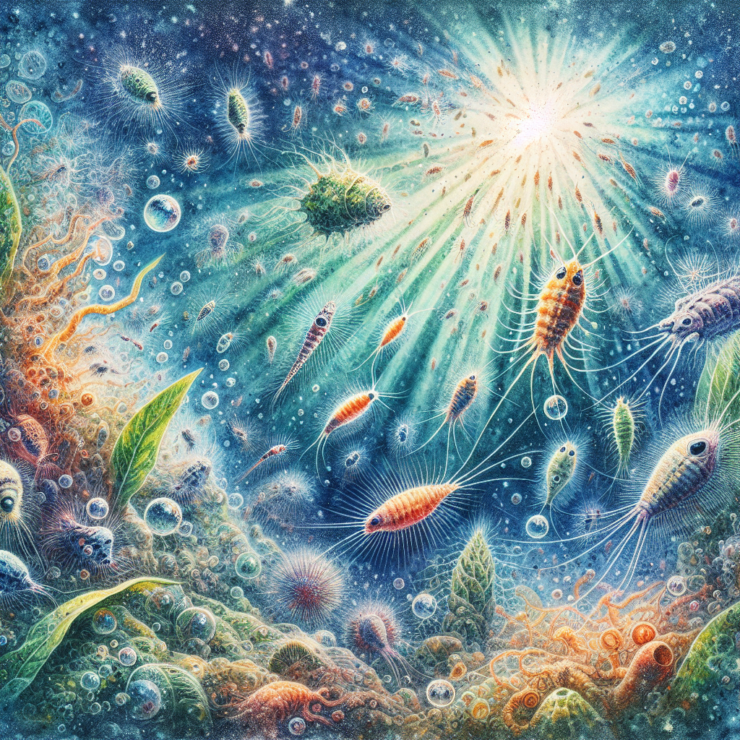Have you ever wondered what creatures lurk in the unseen depths of our oceans, playing crucial but often overlooked roles in our planet’s ecosystems? Among these unseen heroes are the zooplankton, tiny organisms that drift along ocean currents and form the backbone of marine life.
Zooplankton are a diverse group of floating or weakly swimming organisms mainly comprising crustaceans and fish larvae, which serve as a vital food source for a wide variety of marine creatures, including whales, fish, and seabirds.((https://www.marinebio.org/creatures/zooplankton/)) They are the unsung heroes of the ocean, functioning as the primary producers at the base of the food chain.((https://www.epa.gov/national-aquatic-resource-surveys/indicators-zooplankton))
Moreover, zooplankton play an instrumental role in the planet’s carbon cycle.((https://www.us-ocb.org/zooplankton-play-a-key-and-diverse-role-in-the-ocean-carbon-cycle/)) Through a process known as the “biological pump,” they contribute to the sequestration of carbon dioxide from the atmosphere. When zooplankton eat phytoplankton (tiny photosynthetic organisms), they convert carbon dioxide into organic carbon during digestion. Some of this organic carbon is then transported to the deep ocean when zooplankton die or excrete waste, effectively removing it from the atmosphere for hundreds or even thousands of years. This process plays a significant role in mitigating the effects of climate change.((https://www.nature.com/articles/s41467-023-36241-5))
Despite their size, zooplankton are capable of some truly remarkable feats. For example, many species of zooplankton can perform vertical migrations, moving hundreds of meters up and down the water column to feed at the surface during the night and hide from predators during the day.((https://www.nature.com/scitable/blog/saltwater-science/what_makes_plankton_migrate/)) This daily migration is considered one of the largest biomass movements on Earth1.
Zooplankton populations can also serve as indicators of environmental change.((https://www.earth.com/news/rising-temperatures-may-flip-plankton-into-carbon-emitters/)) Scientists monitor fluctuations in zooplankton communities to understand the health of marine ecosystems and predict shifts in fish populations, which have far-reaching implications for commercial fisheries and global food security.
Let the marvels of zooplankton inspire you. These tiny organisms exemplify how even the smallest beings can have a monumental impact on the world. Their role in supporting marine life, maintaining the balance of the carbon cycle, and indicating the health of our oceans reminds us that every creature, no matter how small, contributes to the intricate tapestry of life on Earth. Let’s honor and protect these microscopic marvels and their home—the vast, beautiful oceans.








































Add comment